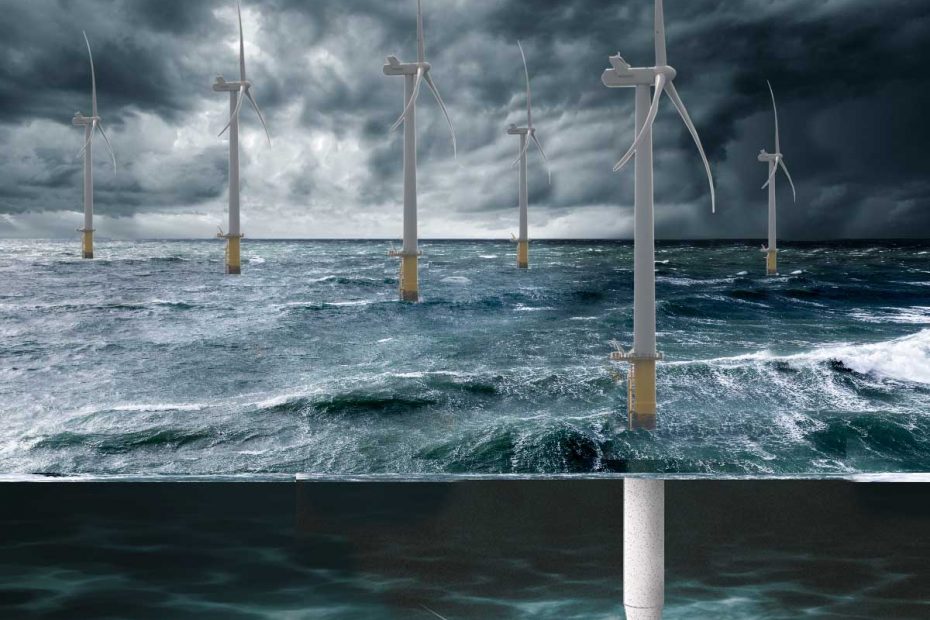Deep sea turbine substructures are poised to revolutionise the offshore wind sector, according to Ian Hatton, Chairman, Enterprize Energy in an article in Power Engineering International.
In the article (which can be found here) Mr Hatton explains why the AWC is ideally suited to Asian markets
“There are tried and tested innovations from the oil and gas sector such as the articulated wind column (AWC), an initiative from ODE and AWC Ltd that is ideal for deep water development – but they’ve been overlooked.
The articulated loading column is a proven technology in O&G, currently deployed at 14 O&G sites worldwide, so ODE and AWC Ltd’s adaptation offers a solid alternative for constructing offshore wind farms far from shore.
AWC’s are buoyant, gravity-based structures, which can be effective across a wide range of water depths but really come into their own in deeper waters up to 200m in depth. They have a compact footprint, facilitating more turbines in smaller areas with more flexible placement than floating wind. And most importantly, they’re considerably cheaper and easier to manufacture.
Benefits of AWC
Another benefit of AWC’s is that it lends itself to construction in non-specialist ports. Floating wind, on the other hand, would require almost starting from scratch as the technology could require new construction machinery and logistics. Furthermore, AWC’s can be constructed from materials like concrete, which means that their foundations can be manufactured faster, cheaper and closer to the offshore project site – driving local economic benefits.
Cultural considerations
To see the offshore wind sector thrive in this region, developing local supply chains and promoting increased localisation will be key. Achieving this would not only benefit the economy involved, but it’s logistically easier than shipping materials across the world. AWC’s allow the developers to commission foundations that will be built in the country that is actually using them.
Developing local supply chains now around more conventional foundation structures would actually benefit the development of floating wind in the long run by facilitating sector maturity, putting those regions in a better place from which to diversify technologies in future.
AWC could also minimise the disruption that could be caused to local fishing industries that are key to the immediate wealth and culture of much of the population. The anchor points required for floating wind are extensive and are therefore a potential source of conflict with fishing patterns and areas. However, with structures like AWC’s the foundations are less disruptive to those industries as they require no supplementary mooring system.”
